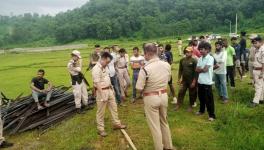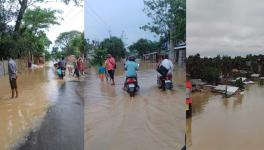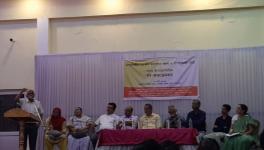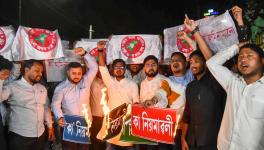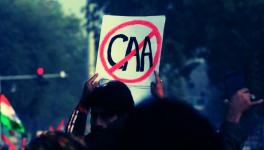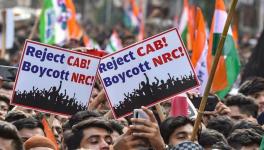Assam Rifles Accused of Using 'Human Shields'
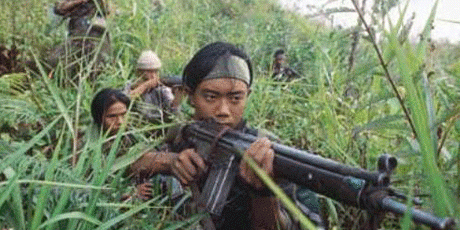
Image Coutesy: The Northeast Today
The Rongmei Naga Council of Manipur (RNCM) condemned the 23 Assam Rifles (AR) actions on May 24, yesterday. They alleged that the 23 AR had used the residents of Tazeikaiphun – a village in Nungba, western Manipur – as 'human shields'. If this is not startling enough, the 23 AR had a National Socialist Council of Nagalim (Isak Muivah) (NSCN(IM)) camp in its sights. The RNCM had alleged that the incident took place at around midnight and that the 23 AR had first entered the village and rounded up villagers before taking them into the NSCN(IM) camp. However, the NSCN(IM) personnel in the camp had already left, thus avoiding bloodshed. The RMNC alleged that the actions of the AR are in violation of the ceasefire agreement between the Indian Government and the NSCN(IM).
In June 2001, a PIB joint release between the NSCN(IM) and the Government of India contained the ceasefire agreement consisting of five clauses. The first clause states that “[t]he Ceasefire Agreement is between the Government of India and the NSCN as two entities without territorial limits.” The second clause gave effect to the ground rules of the CFA which were finalised earlier in January that year. Nowhere have the ground rules nor the CFA mentioned a territorial limit. The CFA has routinely been extended every year keeping an eye on the ongoing talks between the two parties. The controversy over the CFA has always been centred around the phrase “without territorial limits”. The CFA, however, saw Manipur erupt in protest against its territorial unlimited application. Civil society organisations organised shutdowns and burned effigies of then PM Vajpayee, L. K. Advani, NSCN(IM) leaders, the tricolour and the Constitution. The civil unrest even resulted in the state assembly being burned. The Vajpayee government finally did a u-turn and stated that the words 'without territorial limits' would be deleted, and the CFA would be applicable only to Nagaland. However, though the CFA is not applicable outside Nagaland, the two parties have observed a fraught truce in the other Naga-inhabited areas. In 2014, the chairman of the ceasefire monitoring group, Lieutenant General (Rtd) NK Singh dismissed the unlimited territorial application of the CFA.
The disturbing aspect of the RNCM's accusations against the 23 AR is the use of human shields. Under the Fourth Geneva Convention using human shields is prohibited under Article 28. This particular convention is applicable even in cases of internal conflict. Thus, any actions violating the convention would be a war crime. What is surprising about the incident is that the AR has been on a massive public relations drive. Almost all the Northeast-based news agencies regularly feature reports of the AR indulging in 'philanthropic' activities. They have conducted career counselling seminars at schools, lectures on health and sanitation. They have also distributed plants for income generation through afforestation. However, despite the various other activities aimed at 'winning over' the civilian populace, the AR has had a history of harassing militant groups that are either in CFAs or Suspension of Operations (SoO) with the government.
In 2015, the NSCN(K) had abrogated the CFA. The group had alleged violations committed by the AR as the reason for its abrogation. The chain of events, leading up to the decision, began in 2014. On June 3, 2014, Niki Sumi the head of NSCN(K)'s operations in Nagaland had blamed the state government's agencies of harassing the group's workers. On June 20, the NSCN(K) had condemned the AR's raids and harassment of its 'workers'. On July 18, at the ceasefire meeting, the GoI observers demanded that the NSCN(K) stop extortion and restrict the movement of its armed cadres. The NSCN(K) responded stating that the government of India was labelling its tax as extortion and that their cadres had to carry arms for protection from other factions and groups. Interestingly on the same day, they also made a statement that all the armed groups of the Northeast should form a united front, as the issues affecting the people are the same across the region.
The next year, on February 25, the NSCN(K) threatened to retaliate against the harassment meted out to its members. On March 13, the GoI had expressed its displeasure that the NSCN(K) was providing sanctuary to several insurgent groups from other states in Myanmar. The GoI hinted that they may not renew the CFA. On March 25, the NSCN(K) abandoned its designated camp at Surhoto in Zunheboto District. The next day the NSCN(K) threatened to open fire on the security forces if they continued raids and arrests on their members. On the 27th the group announced their withdrawal from the CFA.
The chain of events from 2014 till early 2015 shows that the group had perceived the repeated raids and arrests as against the spirit of the CFA. The CFA would have banned them from 'taxation' as well as carrying arms outside the designated camps except for those members who had been issued ID cards to carry firearms. However, the taxation apart, 2014 was a relatively explosive year. The NSCN(K) had experienced a split, and there were occasional internecine clashes between the NSCN(K) and other groups. Therefore, some leeway may have been accorded. What is interesting is that the NSCN(K) had abrogated the CFA well before the much publicised historic Framework Agreement between the Indian government and the NSCN(IM).
The May 24 raid was conducted on a camp outside Nagaland. Though the NSCN(IM) may issue a statement condemning it, the issue is that the camp was located in an area not covered by the CFA. Though the spirit of the ongoing talks and agreements would dictate that the AR should have observed restraint, the question is whether the raid was an impulsive decision or a command from higher up. Unlike the NSCN(K), the NSCN(IM) has no base outside India. If the orders came from above, there are several possible explanations. It could be an attempt to test the group's resolve in the light of the ongoing talks. On the other hand, it could also be an attempt to derail the negotiations by vested interests in the establishment. Considering that there is a proposal to give some sort of a 'bonus pay' for counter-insurgency duties of the paramilitary forces (the Assam Rifles is a paramilitary force under the Ministry of Home Affairs), if the peace process is concluded, the chances of receiving that bonus are dimmed. However, the NSCN(IM), despite their bluster, know that they have no chance of survival if they walk away from the negotiations unless they resolve their differences with the NSCN(K).
Get the latest reports & analysis with people's perspective on Protests, movements & deep analytical videos, discussions of the current affairs in your Telegram app. Subscribe to NewsClick's Telegram channel & get Real-Time updates on stories, as they get published on our website.









